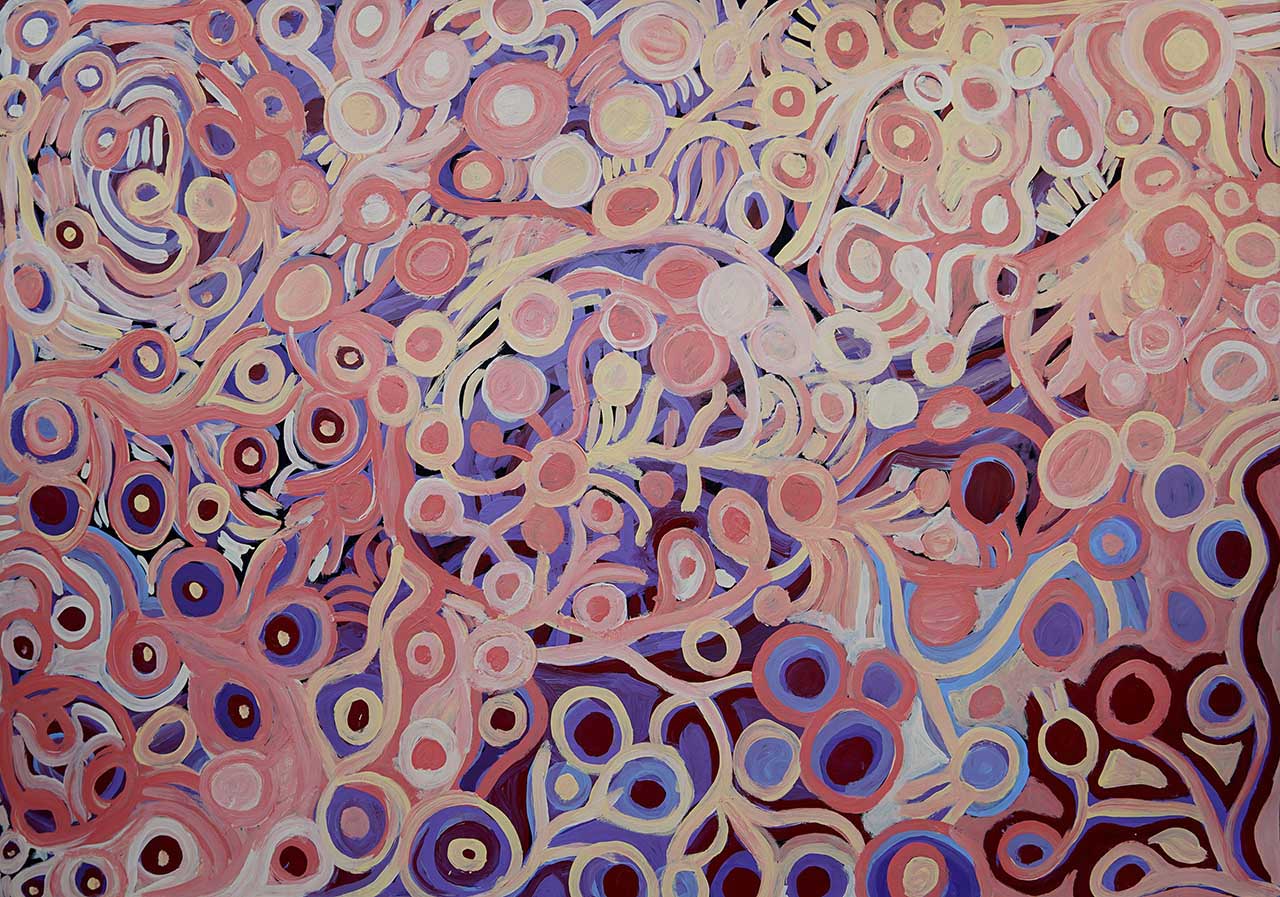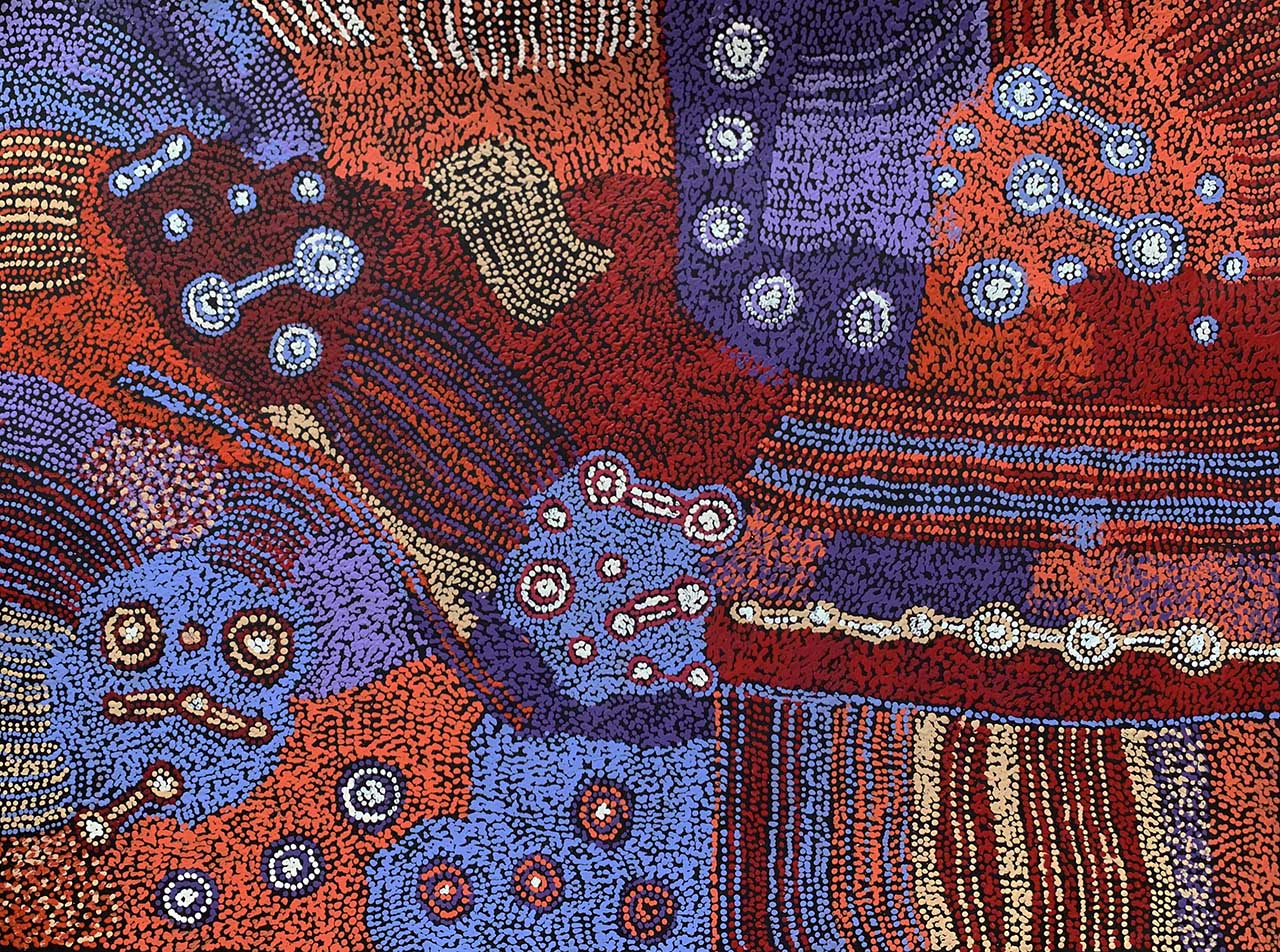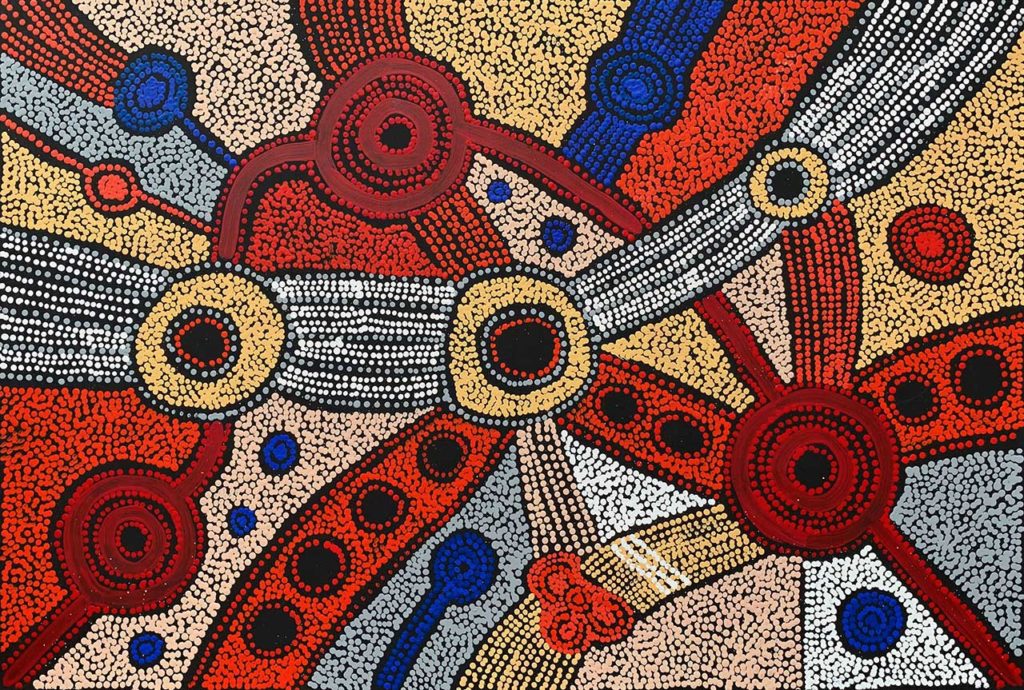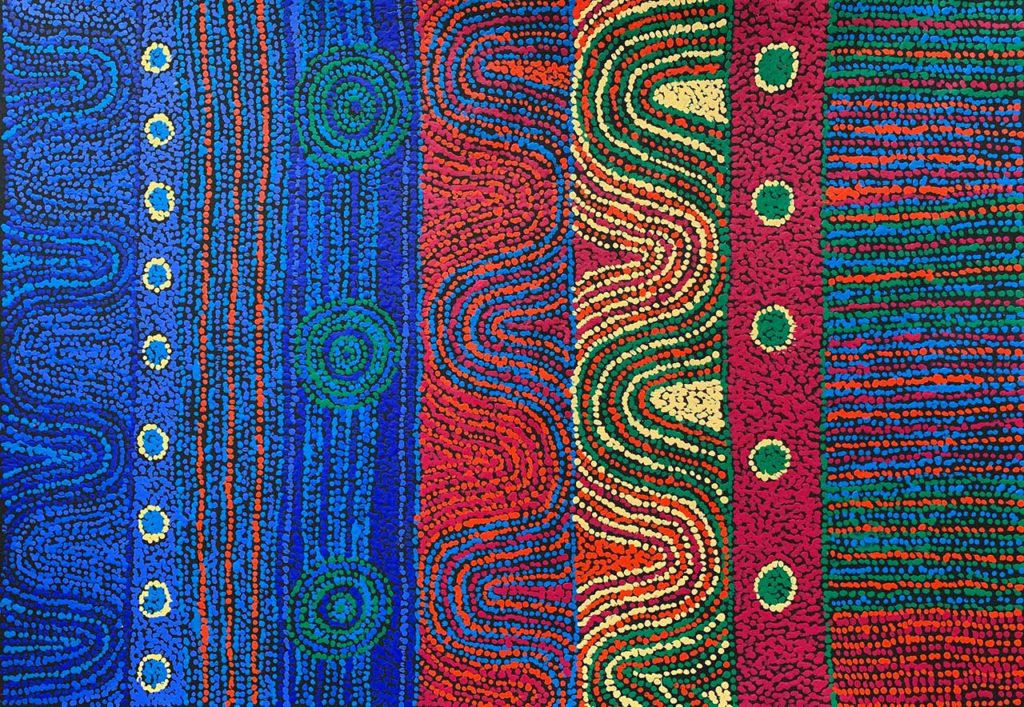Art and Stories from APY Lands
Australia's APY Lands
What does APY Lands stand for?
APY stands for Aṉangu Pitjantjatjara Yankunytjatjara. It is a remote area to the north-west of South Australia mostly inhabited by Aboriginal people living in small townships on their traditional land.
How big is the APY Lands?
APY Lands cover approximately 103,000 km², roughly as big as Iceland.
What language is spoken on APY Lands?
The Anangu people mainly speak Pitjantjatjara (pronounced as pit-jan-jah-jarra) and Yankunytjatjara (pronounced as yan-kun-ja-jarra). Some APY Lands people speak up to six Aboriginal languages as well as English.
How many art centres are there in APY Lands?
There are seven art centres within the APY Lands and these together with Maruku Arts from Uluru, Tjanpi Desert Weavers from Alice Springs, and Ara Iritja Aboriginal Corporation make up The APY Art Centre Collective.
Top Featured Image: Elaine Woods, Minyma Kutjara | Jap 018221

Anangu Pitjantjatjara Yankunytjatjara Lands, South Australia
Dreamtime Stories In Art From APY Lands
Minyma Marilu Tjukurrpa
Stories are passed down through the generations. They might belong to men to share with their sons or women to share with their daughters. APY Lands artist Clarise Tunkin paints the stories of Marlilu, a Pitjantjatjara ancestral creation figure, with evocative power. She recalls visiting Marlilu’s cave with her mother when she was fifteen.
The story takes place between Kanpi and Watarru in the Pitjantjatjara lands. Marlilu is responsible for the formation of many of the landforms in the area including the underground caverns one finds at Mt Lindsay, the mountain that towers over the Watarru community. Marlilu and her sister walk around the countryside at Katatitja, near Kanpi, looking for water (kaapi) and bush tucker (mai).
Times are hard in the desert country, hence the strong, desert colours, and the women have not been having a lot of success finding food. Eventually, after much searching and digging, they find food. As they move around the country, they are pursued by a man who is looking for a wife. The man never finds the two elusive sisters, although he searches everywhere.
Seven Sisters Dreaming
The Seven Sisters Dreaming or Creation Story is also called Kungkarangkalpa Tjukurpa. As seven sisters were travelling across the country, they discovered they were being followed by an evil Tjakamarra man – Wati-Nyiru who, even though he was the wrong skin group, sought to seduce them and make them his own.
The sisters travelled west from place to place to escape from the man who, a master of disguise, constantly changed his form, so they had to keep moving. As the women fled from Wati Nyiru they created the country and landscape, the rock holes and sandhills, trying to out-trick him and escape from him. Some say he wanted to marry the eldest sister but all the younger sisters did not like the idea of their older sister marrying the man because he was ugly and had six toes.
Eventually, the sisters all flew up to the Milky Way and today can be seen as the star cluster known as the Pleiades or Seven Sisters in the constellation of Taurus. They now rest safely and watch over the women on earth. Wati Nyiru, too late, took to the heavens as well and can be seen to the south of the Seven Sisters as Orion, as he still chases them across the sky, but is no longer able to catch or harm them.
APY Resources
APY Articles
Anangu Aboriginal Artists And Their Dreamtime Stories
Andrea Adamson Tiger – An Exhibition Walkthrough
Andrea Adamson – On Seven Sisters, Colour and A Hidden Number
Iwantja Artists Exhibition – Successful Conclusion
APY Exhibitions


Subscribe To Our Email Newsletter
Receive notifications and news about exhibitions and artists.


